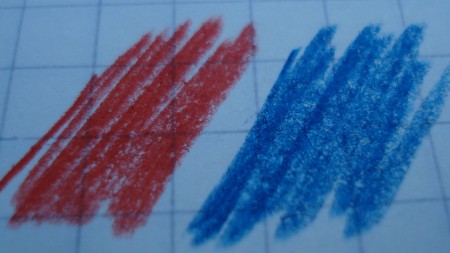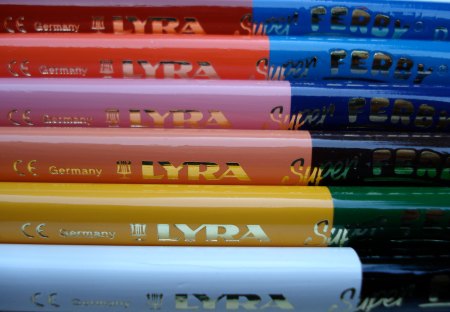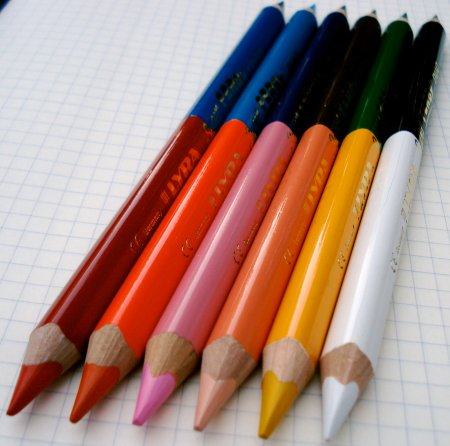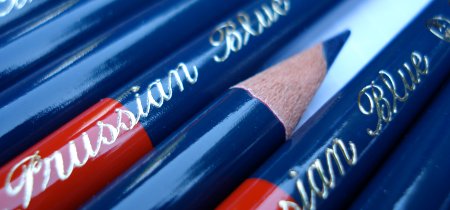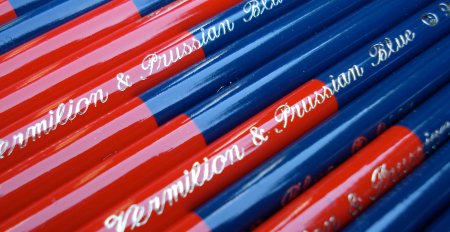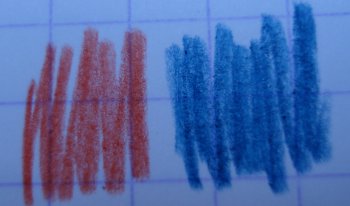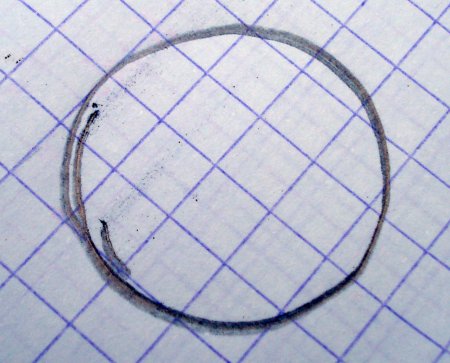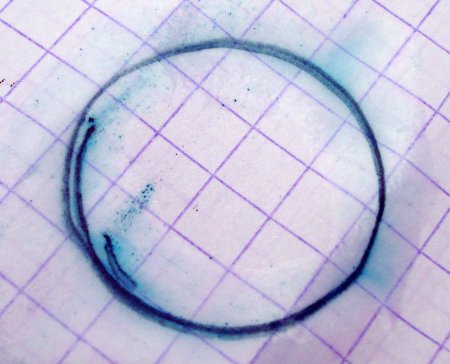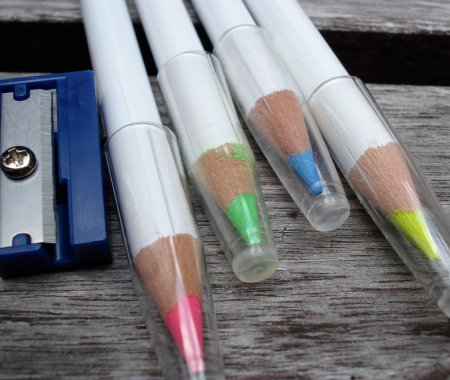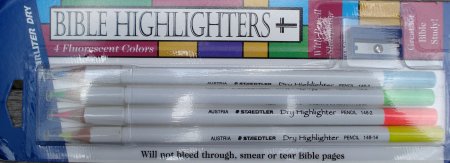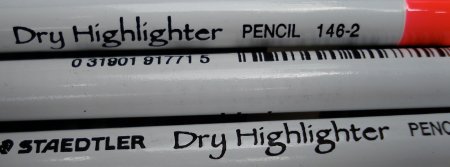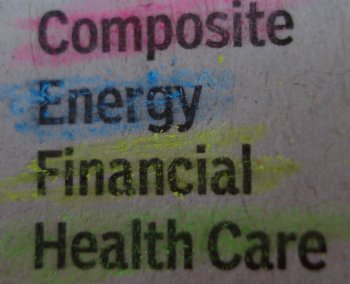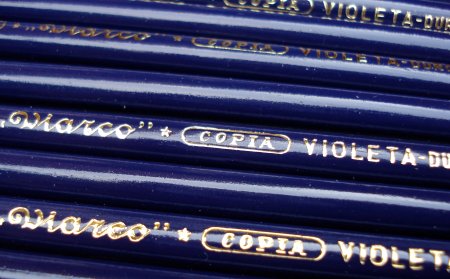
The copying pencil was once a mainstream technology.
A precursor to carbon paper, the Gestetner machine, and the photo copier, the copying pencil allowed the duplication of hand created documents.
In today’s electronic era, the capture and duplication of most analogue input is a relative triviality. Hand copying a hand created document is done only in unusual circumstances. Ancient manuscripts in archives that might be damaged by a scanner’s lamp will be transcribed by scholars. Ceremonial invitations may be handwritten (sometimes in calligraphic script, equally removed from modern practice). But the norm is to digitize (scan, photograph, or photocopy, and possibly further electronically process) documents whose origins are analogue if a copy is required.
Of course, hand written original documents will be less common today, with document creation being partially or wholly electronic in modern offices and schools.
The copying pencil is a bridge between the modern era and the period when copying was not possible. It allows for a single, imperfect, fragile copy (typically on tissue paper) to be taken.
Though once manufactured in quantities of millions, there is relatively little information about how they were used, or how one would use those in current production.
There are four main sources I have been able to consult.
An often cited article, The Copying Pencil: Composition, History, and Conservation Implications by Liz Dube of the University of Notre Dame offers a great overview.
This article reveals that documents written in copying pencil once had presses with damp tissue paper applied, creating copies of correspondence that would placed in letter copying books. The copying pencil contains a dye that is released by moisture.
The article goes well back into the 19th century, and does provoke questions about what modern copying pencils are for. All but one of the pencils in Dube’s article appeared (even with magnification aids) to the author to be a regular graphite pencils.
The one that was not graphite-like was deemed to be a “hectographic” pencil. (And most of today’s copying pencils don’t appear to be graphite-like.)
This Wikipedia article mentions their use in tattoo layout. I have a couple of vintage hectographic pencils, and in searching online for modern ones, I’ve tended to come across websites that have confused the terms “hectographic” with “hexagonal”. They are not the same.
I did come across a tattoo supply company that offers their own brand of hectographic pencil.
The magic of purple pencil by Gajendra Rawat at the Australian War Memorial has further information, and a pretty good example of making a copy – the copy is easily readable.
Henry Petroski’s “The Pencil” only briefly mentions this pencil type.
Pencils mentions that in Italy, copying pencils are used for ballot marking during elections. I am not sure if this is still the case, but it is helpful as a modern usage description.
So I returned for another look at the Noblot, as well as some other modern copying pencils.
I had been trying to use the Noblot more like a watercolour pencil, laying down a line and then applying a brush. (Forgive me, it didn’t come with a manual!) but applying a damp piece of paper to the original produced much better results.


With tissue paper, I realized something else – the paper being see-through, you don’t have to be a mirror-reading expert – just read the copied document from the other side.

This won’t be perfect for copying detailed small writing, but it certainly is nonetheless amazing to find that these pencils have this embedded copying capability.
The official product page doesn’t mention their use, but art supply store Dick Blick says they can be used for assistance in sign restoration and painting.
Next, I tried Lyra’s offering, the Lyrato. Offered in red, green, and blue, I have only the latter two versions. They visually appear to be green and blue colour pencils. Attempting a copy reveals a small secret – the dye colour doesn’t necessarily correspond to the lead colour. Both green and blue pencils reveal the same blue dye! I am now very curious about their red pencil.

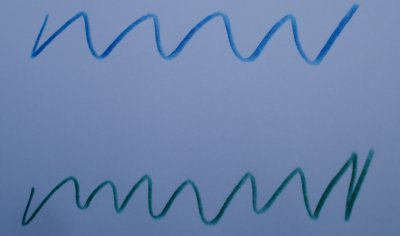
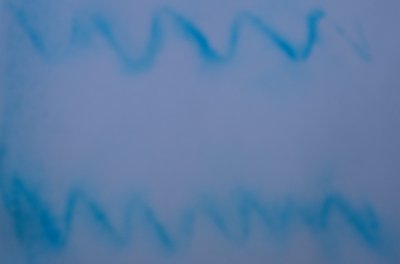
Lyra also has some intriguing offerings in their catalogue, such a copying carpenter’s pencil.
Next, Veritas. Veritas is a brand of Lee Valley Tools, and I am curious about who manufactures these pencils. Lee Valley also sell branded graphite pencils, made in England, while these pencils are marked “Made in USA”.
The Veritas Indelible, like the Noblot, appears to be a regular graphite pencil, so it is the second such modern pencil that I am aware of. It leaves a much richer, darker mark than the Noblot, and has a puple dye. The Veritas Indelible Red is, you guessed it, red with red dye.

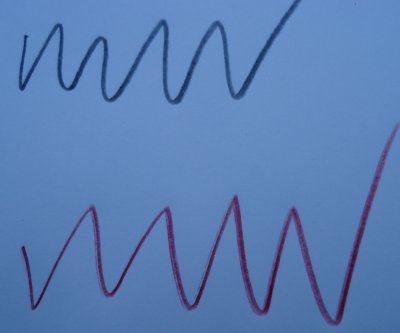
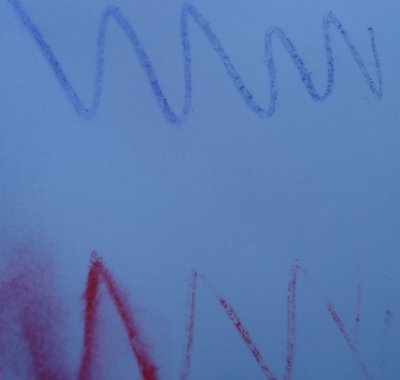
Lee Valley is very clear about what these pencils are for – marking wood with a scriber.
The deluxe copying pencil is the Castell Document from Faber-Castell. It comes in four colours – black, green, red, and blue. The black is like a black pencil crayon, not a graphite pencil.

The black pencil has a most interesting model number, 9100 1/2. I love that “1/2” ! It evokes some of the tradition behind these pencils.

These pencils have the richest colours of this set, both as pencils and dyes.
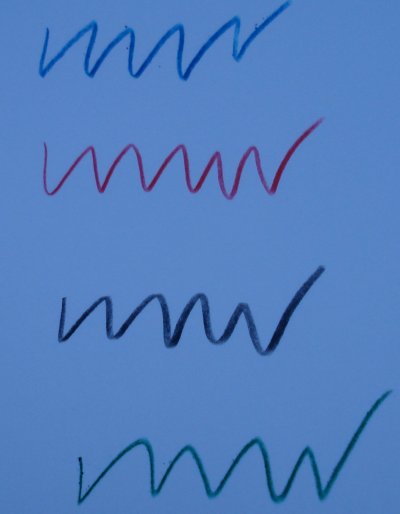
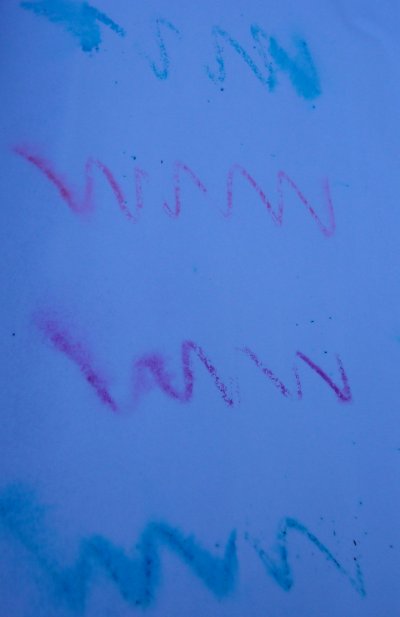
Like the Lyra, what you see is not what you get. The blue pencil has a blue dye, and the red pencil has a red dye. But the black pencil has a purple dye, and the green pencil has the same blue dye as the blue pencil.
Faber-Castell says they are “for cheques, deeds, contracts etc.” Basically, use as an indelible pencil. Hmm, I am skeptical. Why four colours? I don’t think I can even imagine what would ensue if I brought one of these pencils to a bank or lawyer’s office to sign an official document, and I doubt deed signing is the current market.
Finally, Portuguese manufacturer Viarco offers the 272D Copia Violeta. It distinguishes itself with a purple lead. While purple dye may be a standard, the matching lead, dye and rich purple pencil finish create a great thematic unity. Viarco manufactures a full line of pencils, including this gem, with a staff of just over two dozen! That said, it makes a fairly faint line to my eye.
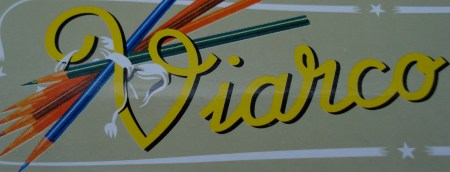
Let’s summarize these modern copying pencils:
| Manufacturer |
Model |
Lead Colour |
Dye Colour |
| Faber Castell |
Castell Document 9100 1/2 |
Black |
Purple |
| Faber Castell |
Castell Document 9609 |
Red |
Red |
| Faber Castell |
Castell Document 9610 |
Blue |
Blue |
| Faber Castell |
Castell Document 9611 |
Green |
Blue |
| Lyra |
Lyrato 778B |
Blue |
Blue |
| Lyra |
Lyrato 778G |
Green |
Blue |
| Lyra |
Lyrato 778R |
Red |
Red? |
| Sanford |
Noblot Ink Pencil 705 |
Graphite |
Purple |
| Veritas |
Indelible |
Graphite |
Purple |
| Veritas |
Indelible Red |
Red |
Red |
| Viarco |
Copia Violeta 272D |
Purple |
Purple |
We’ve seen these modern uses proposed:
tattoo creation
ballot pencil
sign painting aid
scribing implement
indelible pencil for legal documents
I accept “sign painting aid” and “scribing tool” as legitimate uses, though the markets for these purposes must be quite limited. I can’t confirm the election ballot situation, though it would represent a solid but irregular business. And wouldn’t Italy source these pencils from Fila rather than buy any of the pencils named here? Perhaps other countries use the same method.
Regarding the traditional uses as suggested by Faber-Castell – I already mentioned my skepticism here. Ink is not exactly unestablished as a legal marking medium. Or is there some official use I’m not contemplating? Don’t forget the Dube article, which shows this medium does not do well at surviving humidity or moisture. It would seem to be a very unusual choice for official documents.
Tattooing I also accept as a modern use, and wonder if some of the multiple colour pencils might be useful for that task.
Since it isn’t known what sort of market share these pencils have, it may be that the cited uses are in fact correct.
Are there any other uses for these pencils that you are aware of? Or any other manufacturers still making them?

